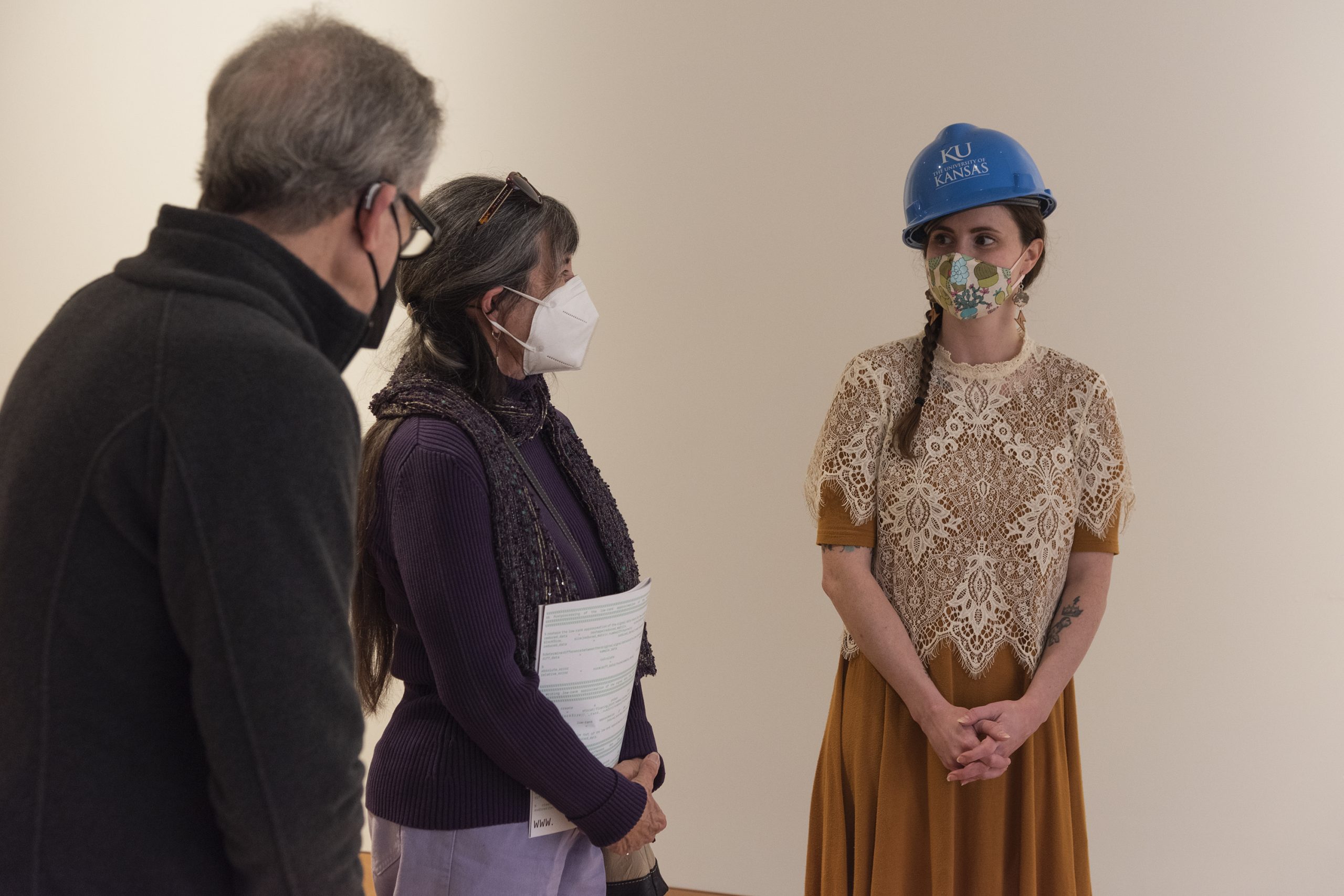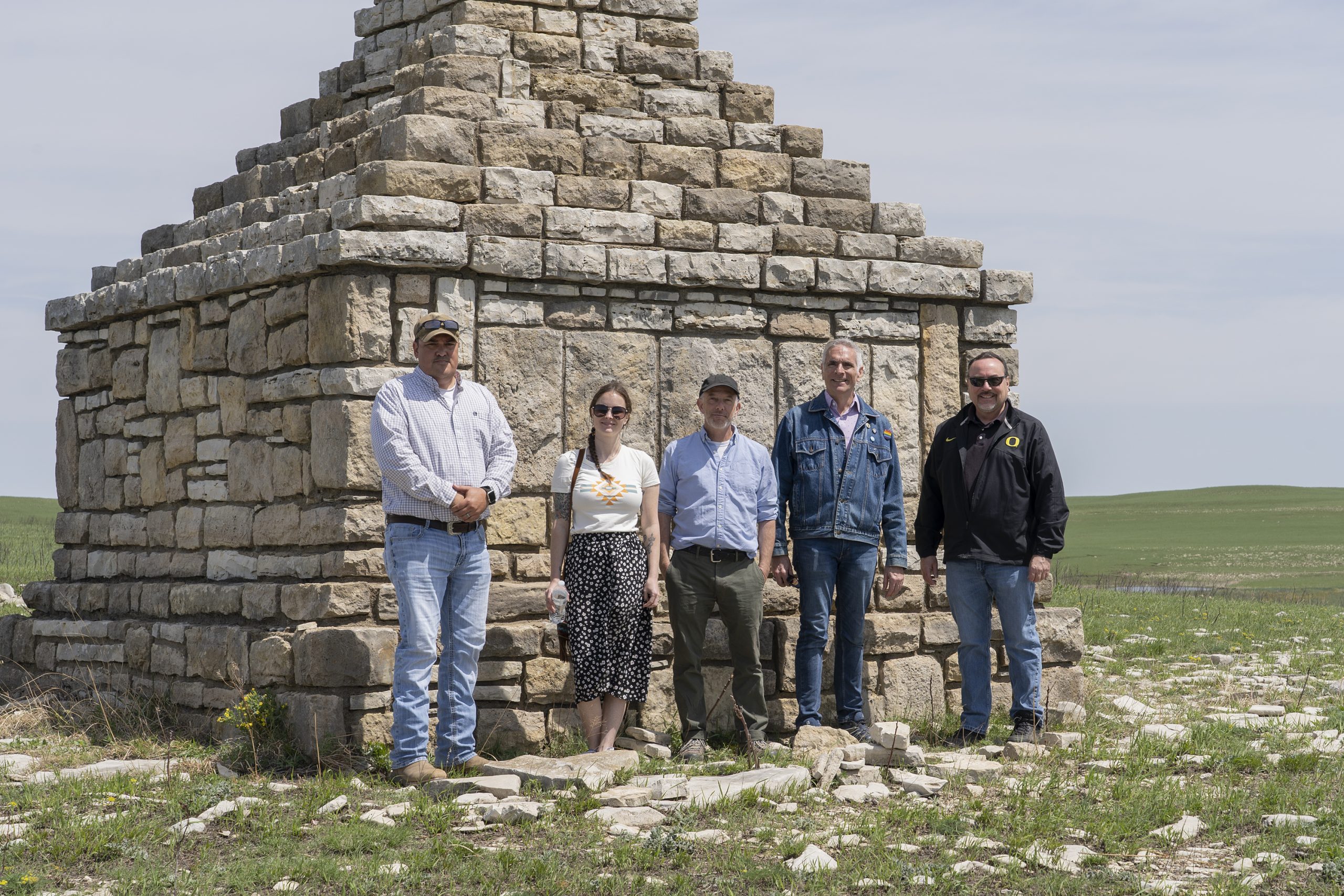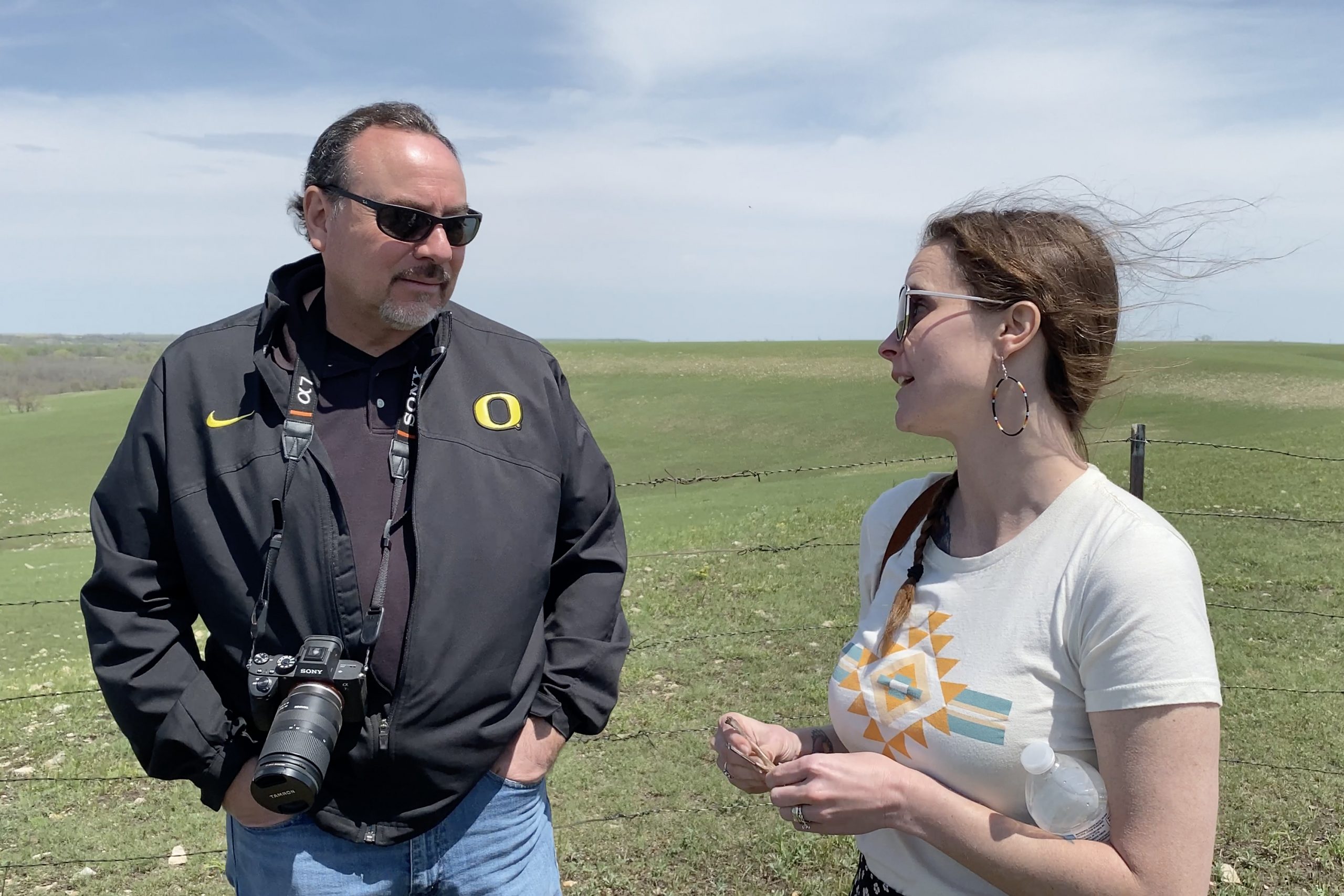
Why Sydney is a Hawk to Watch:
Sydney Jane Brooke Campbell Maybrier Pursel graduated from the University of Kansas in 2017 with an MFA in Expanded Media with honors after earning a BFA in Painting from the University of Missouri. Self-described as an “interdisciplinary artist specializing in socially-engaged, activist, performance, video and new media arts,” Sydney has spent the last half-decade developing a budding artistic career, masterfully creating pieces unbound by singular genres and formats. One look at her portfolio shows her pieces are fresh and thought-provoking, and frequently come with educational aspects that pay homage to her Indigenous and Irish-Catholic roots.
Sydney’s keen interest in Indigenous exhibits has been a consistent theme in her life’s work — which, although a recent College graduate, is an impressively lengthy list. At present, she encompasses a brand new role at the Spencer Museum of Art on the KU campus in Lawrence, in which she curates experiences for the enjoyment of the general public with an emphasis on accessibility and inclusivity.
Read about Sydney’s path from her master’s degree at the College to her current role at the Spencer, all while developing her skills and abilities as a professional artist. See why Sydney is a Hawk to Watch.
Tell us in a sentence or two what you do for a living:

For years I have identified as an artist who does interactive, socially-engaged, and community-based work. However, I recently accepted a position at the Spencer Museum of Art at KU as the curator for public practice, so I’m coming to terms with calling myself a curator now, too. This is a new position for the Spencer where I will connect the public with the museum in new, accessible, and inclusive ways and involve them in the curatorial process.
How did you end up doing what you do? Was there a certain moment when things came together, or was it a longer journey?
It was definitely a journey. I was unsure what I wanted to do with my artwork and career but fell in love with museum work when I started doing internships in graduate school. Without a background in museum studies and only a couple courses here and there, I had a lot to learn and various avenues to explore in the museum field.

Through internships at the Baxoje Woscaci: Ioway Tribal Museum and Cultural Center, the Spencer Museum of Art, and the National Museum of the American Indian, I learned about exhibitions and curatorial and advancement departments. When I saw that the curator for public practice position at the Spencer Museum combined both my interest in public-centered projects and artwork with the museum institution, I felt like the position was written for me!
What do you feel is your biggest achievement so far?
My biggest achievements include fellowship awards to attend residencies at some of the most well respected programs in the world. These include UCROSS, Vermont Studio Center, and Banff Centre, among others. Being an artist and having experience with residency programs myself, I am very excited to work with other artists through residency programs at the Spencer.
What’s your lowest career moment and how did you pick yourself up and move on?

There are MANY times throughout my career when I’ve stopped making art completely, like after a large project or my thesis show. It’s hard not to beat yourself up about not being productive all the time, but letting yourself take time off is important. We need to grow in other ways and not everything should be linked to our production value. It’s usually the people around me that pick me up and encourage me to move on when I can’t find the strength to do it on my own.
Where do you hope to be in 10 years?
As an Indigenous person, I have a responsibility to my tribal nation, the Iowa Tribe of Kansas and Nebraska, our people, and our future generations. In ten years, I want to focus my efforts to bring more public art and culture-centered projects to our people. I am already seeing how the skills I am learning through my current position will help me in my future work for the tribe.
What do you know now that you wish you could tell your 18-year-old self?
Take your time. There’s no rush. It’s okay to change your mind. Call your mother.
What’s your best career pro-tip?
Like many, I have struggled with imposter syndrome. Fake it ‘til you make it, but remember to be yourself!
How did your degree prepare you for your current job?
Applying for university-wide grants during graduate school prepared me for bigger and better local, regional, and national grants. I went from getting $1,000 grants to $6,000; $15,000; $50,000; and $150,000.
What do you do after you’ve clocked out?
I go on lots of walks with my two 12-year old chihuahuas, Rat-Rat and Teagal. I also clean, hang out with my house plants, and garden.
What is a fun fact about you that surprises people?
I didn’t get my driver’s license until I was 22. For a mid-westerner, that is pretty rare. I had little interest in driving and only learned because I received funding through the McNair Scholars program to take my mobile art gallery, a hand-made teepee filled with my artwork, around the country. My chihuahuas came along too.


Meet more of our Hawks to Watch. For more information, visit the School of the Arts, the Department of Visual Art, and the Spencer Museum of Art at the University of Kansas.